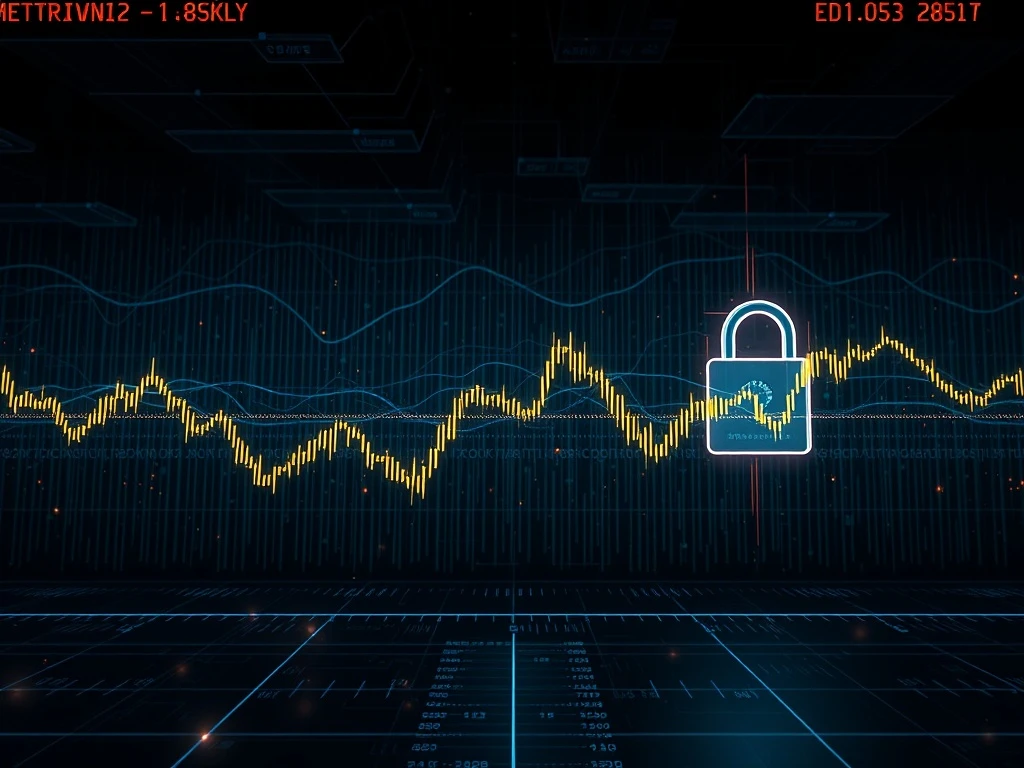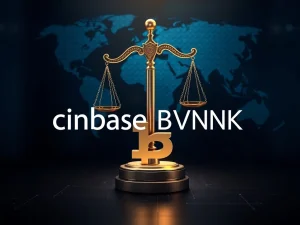Web3 Trading: Unlocking the Future of Institutional Crypto with Dark Pool DEXs

The world of digital assets is evolving at a rapid pace, with the promise of decentralized finance (DeFi) and Web3 technology capturing global attention. Yet, for all its innovation, a significant challenge persists: the current infrastructure for Web3 trading often falls short when it comes to meeting the demands of sophisticated market participants. Binance co-founder Changpeng “CZ” Zhao recently shed light on this critical issue, proposing the creation of a dark pool perpetual swap decentralized exchange (DEX). This isn’t just a fleeting idea; it’s a profound observation on a structural gap that impacts the very maturity of the crypto market.
The Current State of Web3 Trading: A Structural Gap
While Web3 has democratized access to financial markets, its inherent transparency, often lauded as a core strength, can become a significant weakness for large-scale traders. Every transaction, every wallet movement, is publicly visible on the blockchain. This level of exposure, while appealing to retail traders seeking market insights, creates an untenable environment for institutions and whales who need to execute substantial trades without causing market ripples or inviting malicious activity.
Consider the alleged on-chain manipulation involving Hyperliquid, where a nearly $100-million liquidation was publicly tracked and seemingly targeted. Such incidents highlight the inherent risks. In traditional finance, dark pools were specifically designed to circumvent these issues, allowing large orders to be executed without immediate public disclosure, thus minimizing market impact and predatory practices. Web3’s current Web3 trading infrastructure lacks this fundamental layer of discretion.
Why Institutional Crypto Demands Discretion
The crypto market has matured beyond its early adopter phase. We now see digital assets consistently valued in the billions, attracting a diverse range of participants, including regulated funds, corporate treasuries, and seasoned institutional investors. These entities operate under different paradigms and expectations than individual retail traders. They are accustomed to sophisticated execution venues that prioritize discretion, efficiency, and scale.
The existing execution models in crypto – over-the-counter (OTC) desks with limited scope, aggregators, and peer-to-peer swaps – are often prone to slippage, inefficiency, and, critically, public exposure. Wallets belonging to major players are constantly monitored, turning every move into a potential market signal. This constant visibility is a major deterrent for institutional crypto players who need to enter and exit positions without triggering a frenzy, ensuring their strategies remain private and their capital protected.
Comparison: Traditional Finance Dark Pools vs. Current Web3 Trading
To better understand the gap, let’s compare how traditional finance handles large, sensitive trades versus the current state of Web3.
| Feature | Traditional Finance Dark Pools | Current Web3 Trading (Public Blockchains) |
|---|---|---|
| Order Visibility | Orders are hidden until execution. | Orders and liquidity are publicly visible (or easily inferred). |
| Market Impact | Minimized, as large orders don’t immediately affect prices. | Significant, as large orders can trigger front-running and panic. |
| Privacy for Traders | High; protects trading strategies and identities. | Low; wallet addresses are public, leading to surveillance. |
| Protection from Predatory Trading | Designed to mitigate front-running and manipulation. | Vulnerable to MEV attacks, front-running, and sandwiching. |
| Institutional Suitability | Standard tool for large-scale institutional trading. | Lacks features required for high-volume, discreet institutional participation. |
The Urgent Need for MEV Protection
One of the most insidious threats in the current Web3 landscape is Maximal Extractable Value (MEV). MEV refers to the profit miners or validators can extract by reordering, inserting, or censoring transactions within a block. For large trades, this can manifest as front-running, where bots detect pending transactions and execute their own trades first, profiting from the price movement caused by the larger trade. This effectively siphons value from legitimate traders, eroding trust and efficiency.
CZ’s proposal for a dark pool DEX directly addresses this. By concealing trade mechanics until execution, such a system would significantly reduce the ability of MEV bots to identify and exploit large orders. True MEV protection is not just a luxury; it’s a necessity for any financial infrastructure that aims to attract serious capital and ensure fair execution for all participants, especially those moving significant sums.
Decoding CZ’s Vision: The Promise of a Dark Pool DEX
The concept of a DEX with hidden liquidity, where orders are not visible until after execution, is not new to traditional finance, but it remains largely absent in the crypto space. CZ envisions a protocol that leverages cutting-edge privacy-enhancing technologies like zero-knowledge proofs (ZKPs) or multiparty computation (MPC) to obscure the details of trades until they are finalized. The primary objective is clear: safeguard against MEV bots, mitigate market manipulation, and cultivate a secure environment for high-volume transactions.
Implementing a functional dark pool DEX presents unique technical and regulatory challenges. Achieving full opacity while maintaining auditability and preventing undisclosed manipulation is a delicate balance. Regulators and certain segments of the user base may express concerns if such structures reduce overall market transparency. The path forward will require innovative solutions that balance the need for discretion with the imperative for accountability and regulatory compliance.
Harnessing Blockchain Privacy for Advanced Trading
The core of CZ’s proposal, and indeed the future of sophisticated Web3 trading, lies in advancing blockchain privacy. Technologies like ZKPs allow one party to prove that a statement is true without revealing any information beyond the validity of the statement itself. MPC enables multiple parties to jointly compute a function over their private inputs while keeping those inputs secret. These tools are crucial for building systems where trade details remain confidential until settlement, providing the discretion that large traders require.
This isn’t about fostering illicit activities; it’s about enabling a level of financial sophistication currently missing in Web3. By allowing large participants to execute trades without broadcasting their intentions, these privacy solutions can facilitate greater capital inflow, reduce market volatility stemming from speculative reactions to large orders, and ultimately foster a more mature and efficient market.
Challenges and the Path Forward
While the benefits of a dark pool DEX are compelling, the journey to its widespread adoption is not without hurdles. Regulatory bodies globally are grappling with how to oversee decentralized finance, and the introduction of ‘dark’ elements will undoubtedly spark debate. Ensuring that privacy features do not inadvertently enable illicit activities or hinder necessary oversight will be paramount. Furthermore, building and maintaining such sophisticated protocols requires immense technical expertise and robust security measures.
However, whether CZ’s specific dark pool DEX materializes or not, his articulation of this need serves as a powerful market signal. There is an undeniable and growing demand for infrastructure that supports private, large-scale crypto transactions without relying solely on centralized intermediaries or outdated, exposed tools. It is about more than just shielding trades; it is about enabling true scale, facilitating strategic exits, and reducing friction for serious market participants.
Conclusion: Web3’s Imperative to Grow Up
As Web3 continues its rapid maturation, the foundational assumptions we have operated on for the past decade must evolve. The notion that every transaction must be public by default, while appealing to some ideological purists, no longer aligns with the realities of a rapidly growing, capital-intensive industry. CZ’s call for a dark pool DEX is not merely a reaction to isolated incidents; it is a profound diagnosis of a systemic need within the ecosystem.
If crypto is to successfully attract and retain serious capital, it must provide serious infrastructure. This translates to execution privacy, intelligent safeguards against predatory practices, and a clear distinction between transparency (which promotes trust) and exposure (which invites exploitation). Web3 is finally growing up, and its tools and infrastructure must evolve in tandem to meet the demands of a global financial landscape. The future of decentralized finance hinges on its ability to offer both innovation and the discretion required for true market sophistication.







